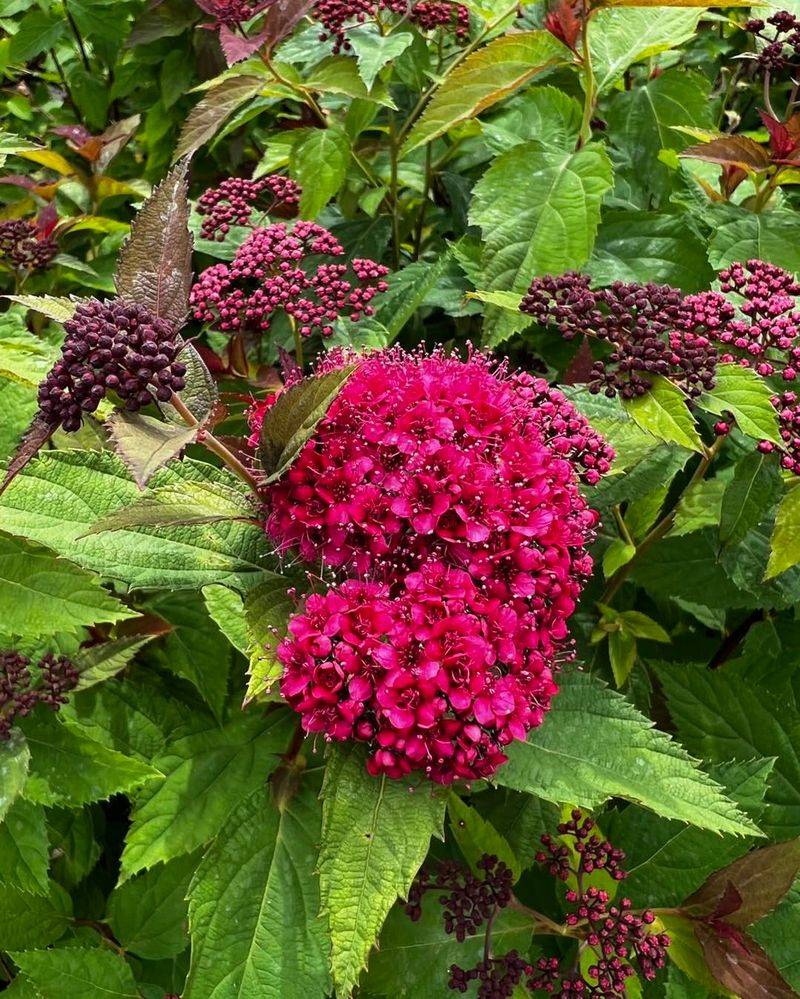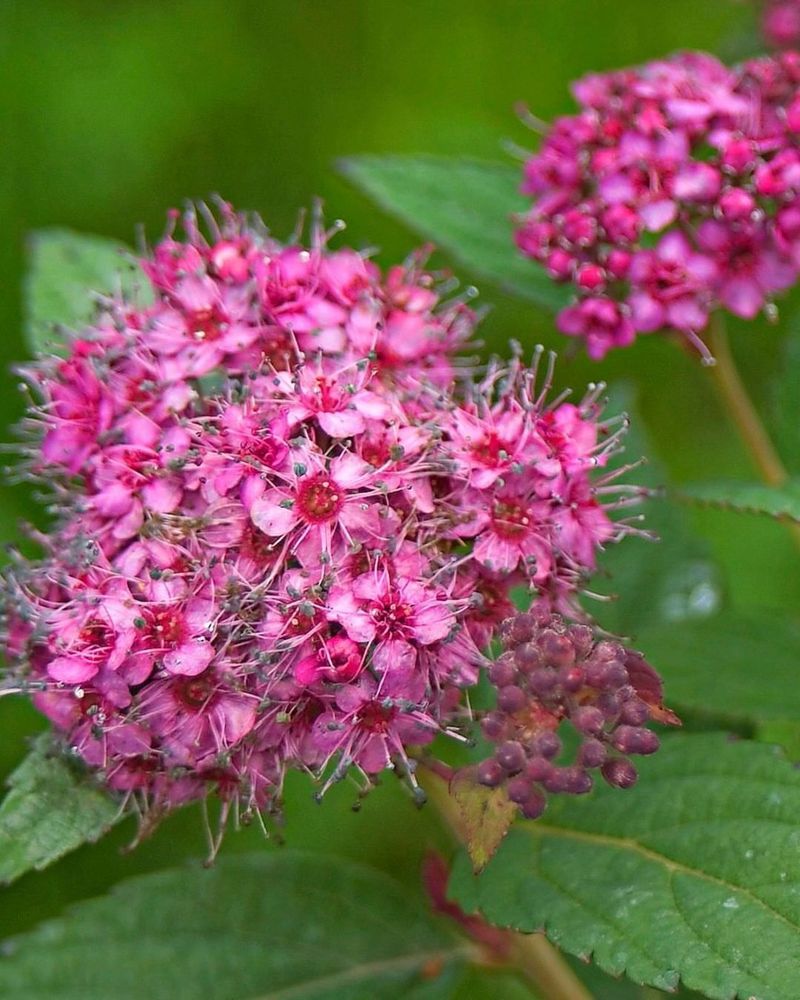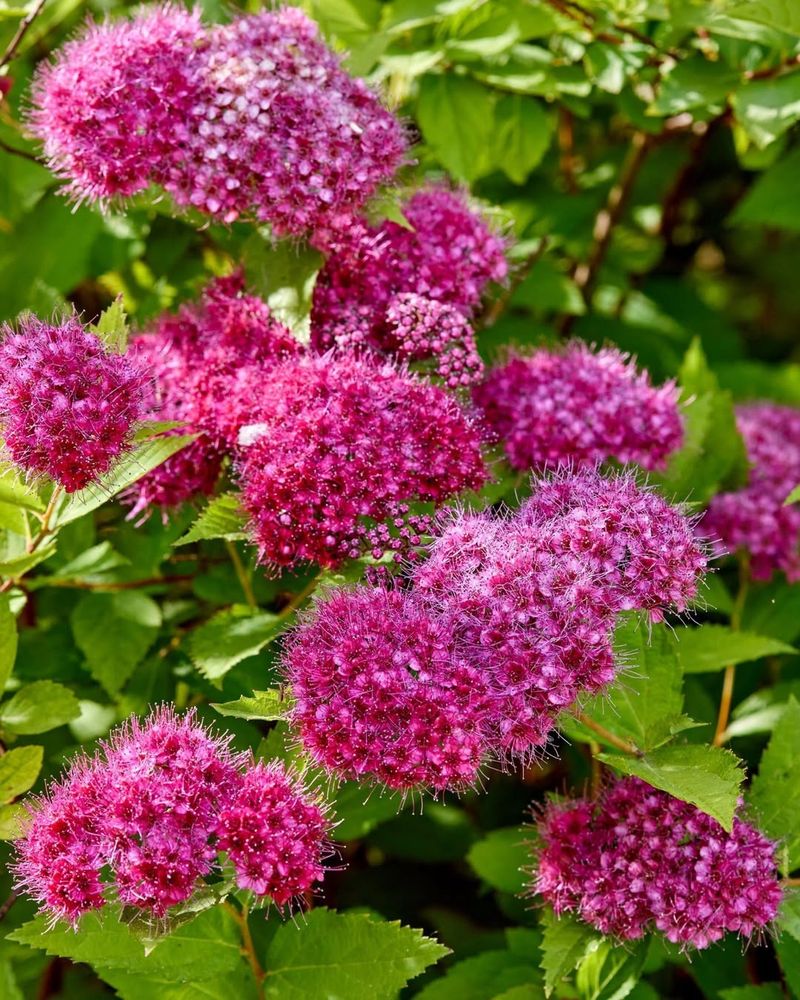A burst of rosy color can stop any Indiana gardener in their tracks, and one shrub hits the nail on the head every time.
Pink spirea steps up with vivid blooms and rock-solid toughness that make the landscape feel alive. This compact standout shows real grit, shines bright as a button, and proves that dependable plants still pack flair. With pink spirea in the mix, a yard truly feels ready for prime time.
1. Survives Indiana’s Harsh Winters With Ease
Cold temperatures don’t scare pink spirea one bit. This tough shrub handles Indiana’s freezing winters without needing special protection or extra care from gardeners.
Most varieties survive down to negative 30 degrees Fahrenheit, making them perfect for USDA hardiness zones 3 through 8. When spring arrives, the plant bounces back quickly and prepares to bloom beautifully.
You won’t need to wrap it in burlap or worry about frost damage like you would with more delicate plants.
2. Blooms Arrive In Late Spring To Early Summer
Timing is everything when it comes to garden beauty. Pink spirea typically bursts into bloom between May and June, depending on the specific variety you choose and local weather patterns.
The flowers appear in dense clusters that cover the branches, creating a spectacular pink cloud effect. Each bloom period lasts several weeks, giving you plenty of time to enjoy the colorful display.
Some varieties even produce a lighter second bloom in late summer if conditions are right.
3. Attracts Butterflies And Pollinators To Your Yard
Watch your garden come alive with fluttering wings and buzzing visitors. Butterflies absolutely love the nectar-rich flowers that pink spirea produces throughout its blooming season.
Bees, hummingbirds, and other beneficial insects also flock to these shrubs, making them excellent choices for pollinator-friendly landscapes. Creating habitat for these creatures helps your entire garden thrive while supporting local ecosystems.
Kids especially enjoy watching the constant activity around blooming spirea bushes during warm afternoons.
4. Grows Best In Full Sun Locations
Sunshine makes all the difference for maximum flowering power. Plant your pink spirea where it receives at least six hours of direct sunlight daily for the healthiest growth and most abundant blooms.
While these shrubs can tolerate partial shade, they won’t produce as many flowers in darker spots. Southern or western exposures work wonderfully in Indiana yards.
Full sun also helps prevent fungal diseases by keeping foliage dry and promoting good air circulation around the plant.
5. Requires Minimal Maintenance Once Established
Busy gardeners rejoice—pink spirea practically takes care of itself. After the first growing season, these shrubs need very little attention beyond occasional pruning to maintain their shape.
They resist most pests and diseases naturally, so you won’t spend weekends spraying chemicals or treating problems. Drought tolerance develops over time, meaning less watering during dry spells.
A simple spring trimming and maybe some mulch around the base keeps them looking fantastic year after year without much effort.
6. Comes In Multiple Varieties For Different Heights
Size matters when planning your landscape design. Pink spirea varieties range from compact dwarf types growing just 2 feet tall to larger cultivars reaching 4 to 5 feet in height and width.
Popular choices include Spiraea japonica ‘Anthony Waterer’ and ‘Magic Carpet,’ each offering unique characteristics. Dwarf versions work perfectly along walkways or in front of taller plants.
Bigger varieties make excellent privacy screens or focal points in flower beds, giving you flexibility for any garden space.
7. Prefers Well-Drained Soil But Adapts Easily
Soil conditions can make or break a plant’s success. Pink spirea thrives best in well-drained soil that doesn’t stay soggy after rain, but it adapts surprisingly well to various soil types.
Clay, loam, or sandy soils all work fine as long as water doesn’t pool around the roots for extended periods. Adding compost at planting time improves any soil type.
Indiana’s naturally varied soil conditions rarely pose problems for these adaptable shrubs, making them reliable choices across the entire state.








